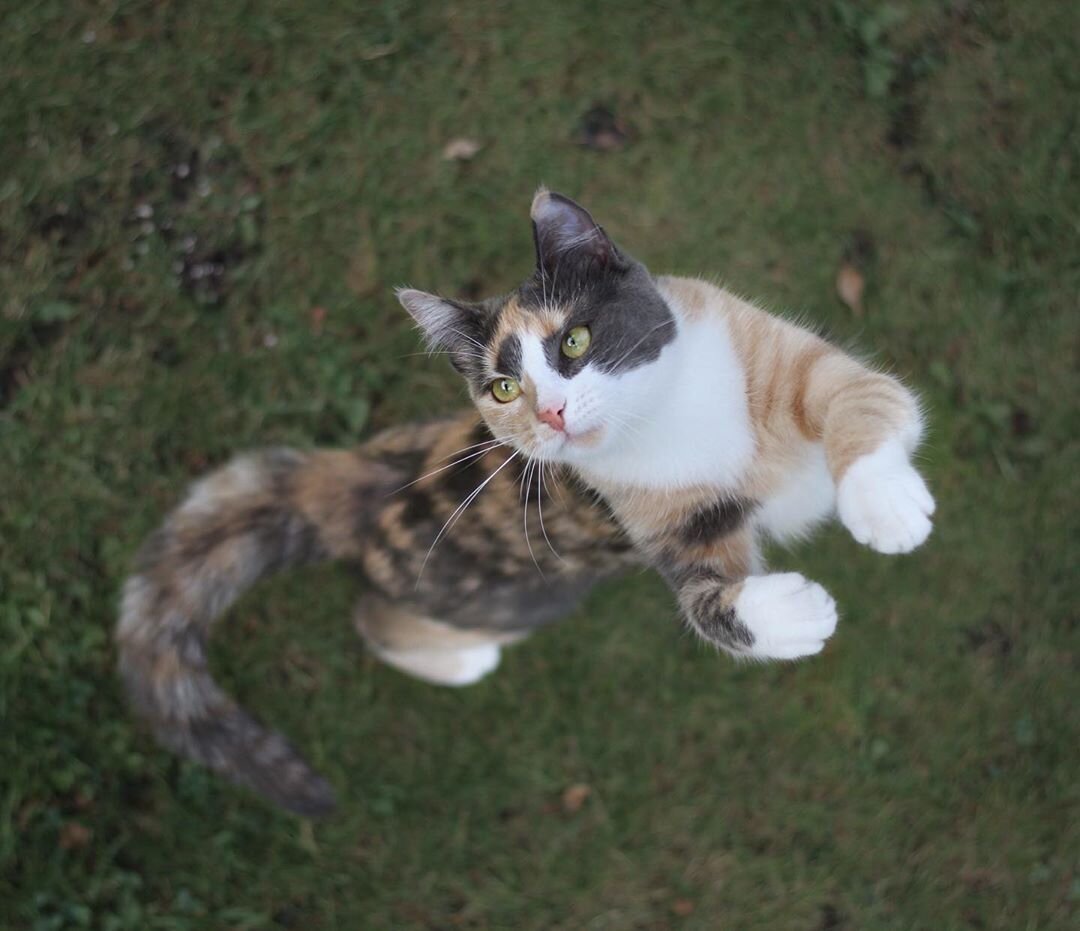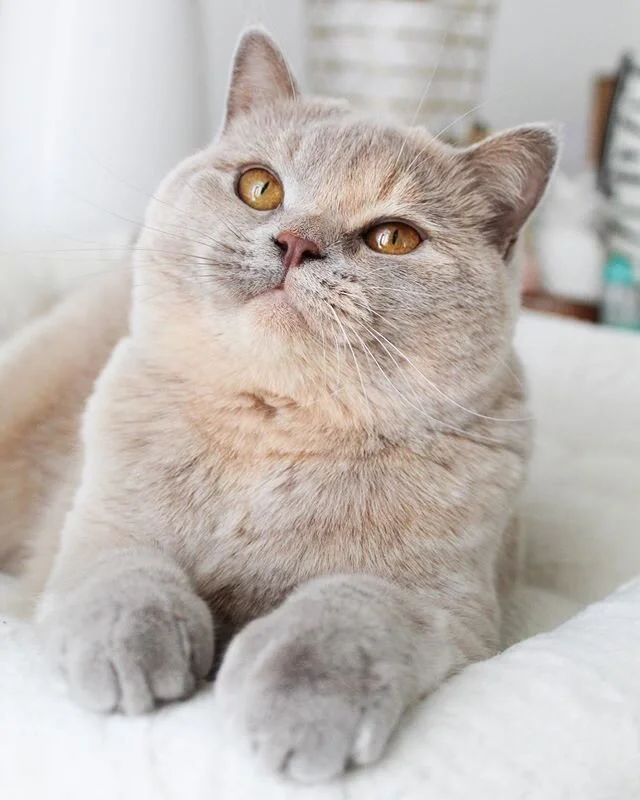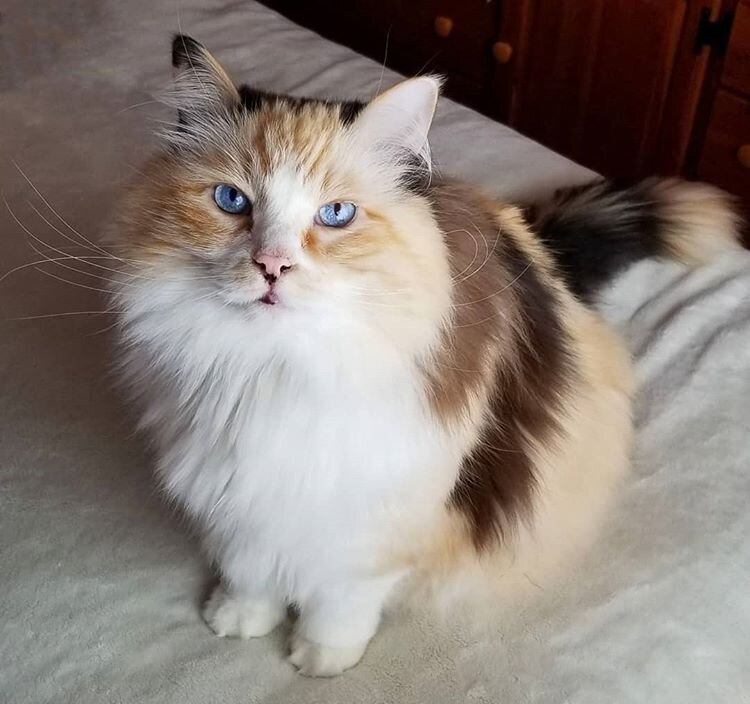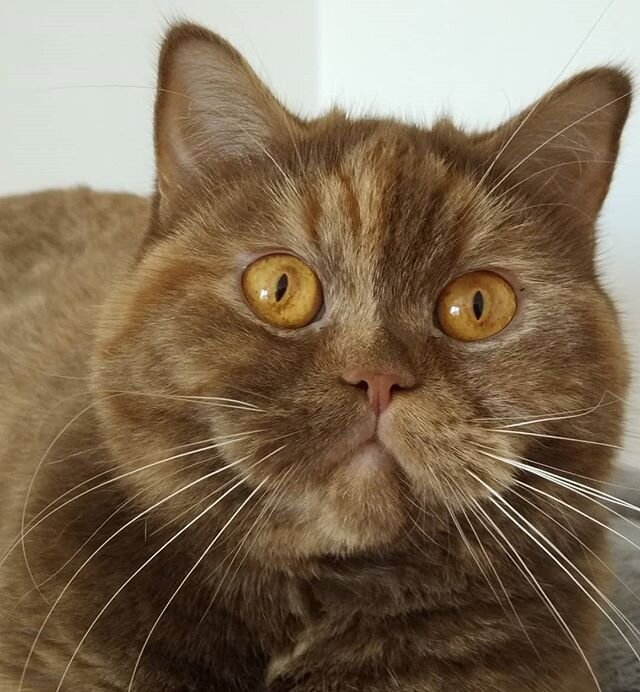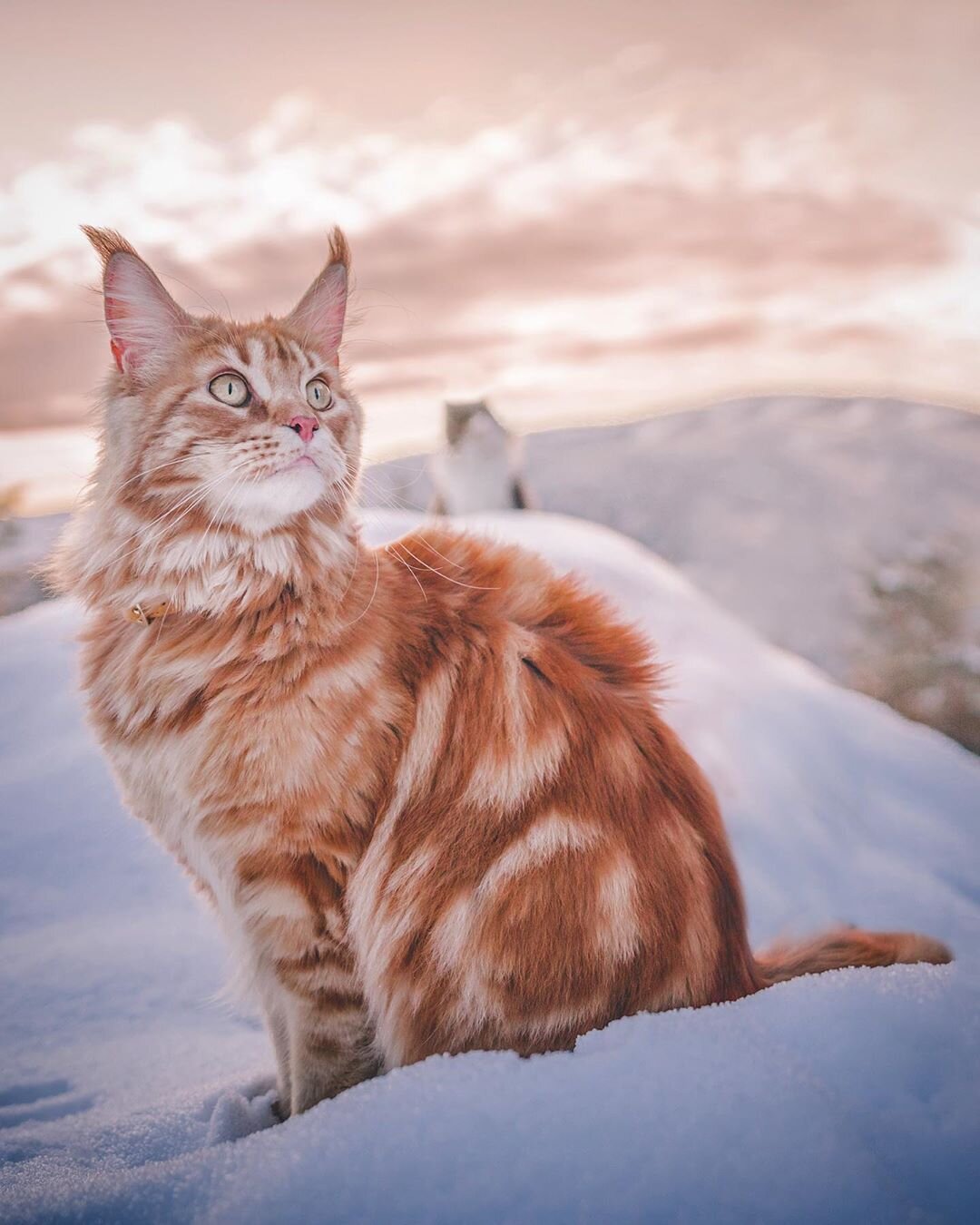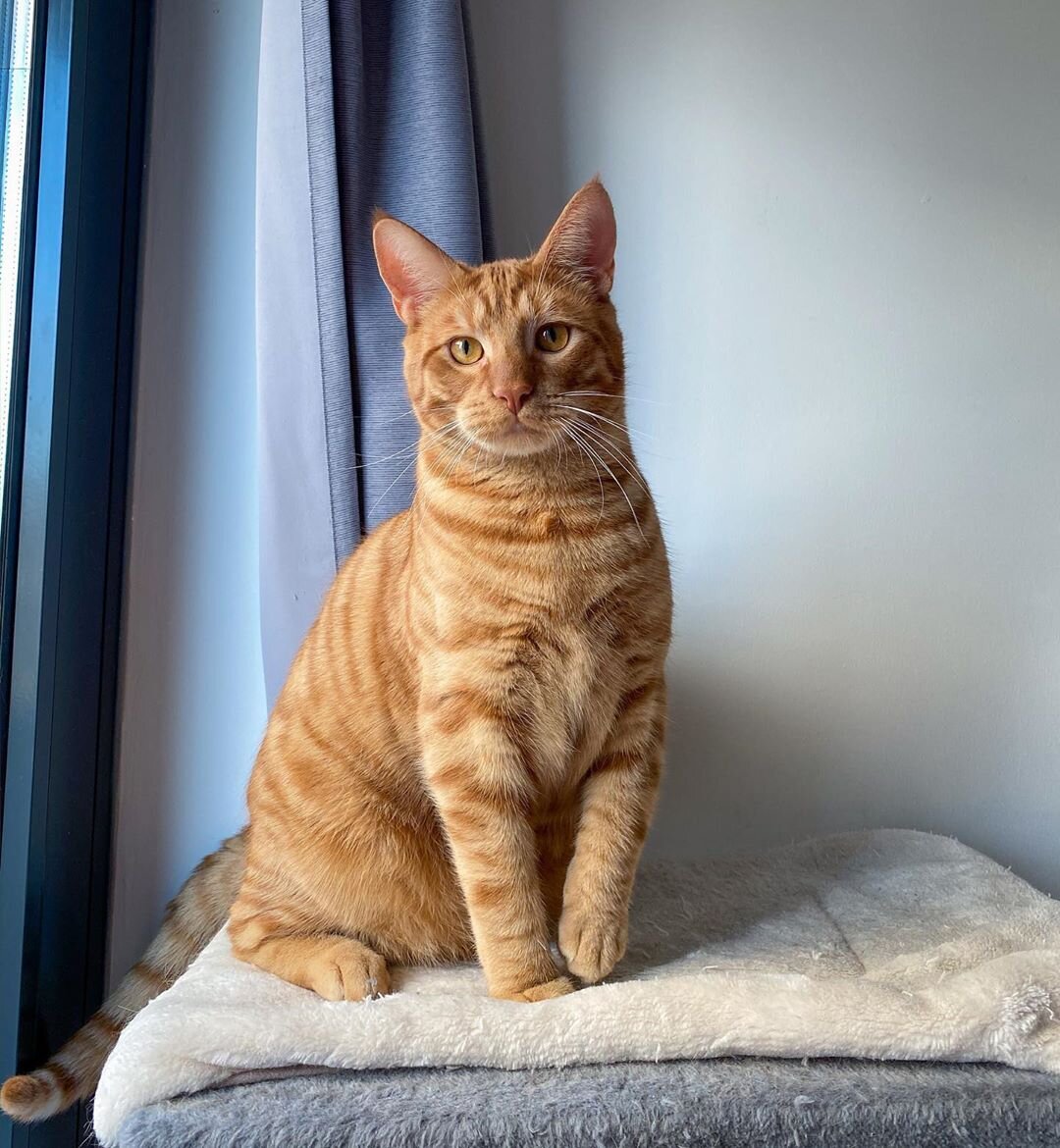Cat coat: torties, red cats and genetics
What's the color of your cat? To answer this question, in this second article of the series on cat coats we are going to talk of torties and red cats, the genetics behind these colors, and some prejudice on these colors!
Note: Before reading this article, I recommend that you read the first article of the series on solid cat colors, as some of the genetic explanations are useful to understand this article.
Torties
Torties, also known as tortoiseshells, got their name because of the black tortie's similarity with the colors of the shell of a tortoise.
A tortie cat has both a black-based color and a red-based color. For example, the classic tortie, or black tortie, can also be called "black and red". If the black-based color is diluted, the red-based color associated with it will be "diluted red", which is the cream color.
There are 6 different kinds of torties, one for each black-based color. Namely black tortie (or black and red), blue tortie (also called dilute tortie or blue and cream), chocolate tortie (or chocolate and red), lilac tortie (or lilac and cream), cinnamon tortie (or cinnamon and red), and fawn tortie (or fawn and cream).
It’s quite common for torties to have a “split face”: one side of their face is red and the other one is black. This shouldn’t be confused with a chimera.
Black tortie or black and red from @hazel_the_tortie
Tortie and white
When a tortie also has some white spots, they are generally called tricolor or calico cats. In fact, they are genetically tortie with the white spotting gene. I will talk more about the white spotting gene in a dedicated article!
The more white spots on a tortie cat, the more the patches of black-based and red-based colors will be distinct. This is contrary to torties that don't have any white spots, and that have instead a brindled color.
Blue tortie and white also called dilute calico from @itsmistycat
Tortie and tabby
To know if a tortie cat is also tabby, you need to look at its black part. If this part presents some markings (e.g. some stripe patterns), the tortie is also tabby. It’s important to look only at the black part, as the red (or cream) part will always have markings and appear tabby.
Below you can find an explanation of why red cats always have the tabby markings.
Cats which are tortie tabby are often called torbie, from the contraction of the word "tortie" and "tabby". I will talk more about the tabby gene in a dedicated article!
Black tortie tabby and white, or torbie and white from @mausi.meow
Tortie and red cats genetics
Tortie cats are almost all female
Note: in this part, I will dive into the genetics behind the tortie color: I advise that you read first the introduction to genetics in this article.
The red color is the expression of the orange gene: this gene causes the transformation of black pigments into orange pigments in the hairs of the cat.If a cat carries the orange gene, we'll denote with "O" its allele; if it carries the "not orange" gene, we will denote its allele with a lower-case "o".
The orange gene is sex-linked: the gene is, in fact, situated on the X chromosome, and that explains why almost all tortoiseshells are female! We will talk about an exception to this rule in the next paragraph.
The sex chromosomes of a male cat are XY. As the orange gene is on the X chromosome, if the cat is a male there are only two possibilities:
XO Y: the male has the orange gene and so he has an orange-based color (red or cream)
Xo Y: the male has the "not orange" gene and so he has a black-based color.
Females have two X chromosomes, and so there are three possible combinations:
XO XO: the female has two times the orange gene and so she has an orange-based color
Xo Xo: the female has two times the 'not orange' gene and so she has a black-based color
Xo XO: the female has both the not orange and orange gene. These genes are codominant, so the female cat is both red and black, which is what we call a tortie.
You can now easily understand that it’s theoretically impossible, for a genetic reason, to have a male tortie cat.
Lilac tortie or lilac and cream from @bocatblue
Tortie males
Because life happens, in reality, male cats with a tortie color can also exist! These are exceptional, rare occurrences: tortie male cats are generally chimeras. An example of a chimera is Skye Blue Humphrey Bogart, also known as “Bogie”: a male, black tortie point and white that isn't sterile (he has fathered a litter!).
Another possibility is that these males have the Klinefelter syndrome: they have an extra X chromosome (so they have XXY as their sex chromosomes). These male torties are sterile.
Bogie the male tortie cat from @bogie.tortiecat
Dilute modifier
In the previous article, we explained what is the dilute modifier gene: its effect is that it dilutes the quantity of pigment in the hairs of the cat, which will then appear of a lighter color. The effect of this dilute modifier gene is applied to all the other genes that determine the color of a cat. In a tortie cat, the dilute modifier gene is, therefore, applied both to the black-based color and the red-based color. That’s why if the cat has a dilute black color such as blue, lilac, or fawn, the complementary color will be cream (cream is the dilution of red).
So, having a black and cream tortie or blue and red is genetically impossible.
Cinnamon tortie from @my_lovely_british_
Red cats
Red hiding other colors
When a cat is red, the Orange gene masks the black-based gene of the cat, which could be the locus B, b, or bl. This means that a red cat can mask black, chocolate or cinnamon, and a cream cat can mask blue, lilac, and fawn.
Some breeders have noticed that the masked color can influence the nuance of red of the cat. For example, red masking chocolate seems to be less intense than red masking black.
Red female cats
As to have a red color a female cat needs to carry two times the Orange gene (contrary to the male that needs to have the Orange gene only one time), red female cats are less common than males.
Red tabby
You may have noticed that the red part of a tortie always has tabby markings, even if the black color is solid. Similarly, you may also have noticed that all red cats are tabby. The solid gene or ‘not tabby’ gene does not, in fact, affect the red pigments. For this reason, all red or cream cats appear as tabby, and this is similarly applied to the red or cream part of a tortie!
However, it’s sometimes possible to guess if a red cat is genetically solid or tabby. Here are a few tips to recognize them:
Red solid (also called red self):
More uniform red color, with less visible markings
Red tabby:
White markings around the mouth and chin, and around the eyes
White line inside the ears
More contrasted tabby markings
Caution: Those are only tips and won’t work for every cat, the only way to know for sure is to do a DNA test!
Here is everything you need to know about torties and red cats. In the next article we will talk about the tabby markings, so stay tuned to know more about cat furs!
Sources
Messy Beast Tricolours
Messy Beast Ginger facts
Other article on cat coat
Solid cat colors
Tabby cats
Point colorations
White cats and white spotting
Silver and smoke cats

